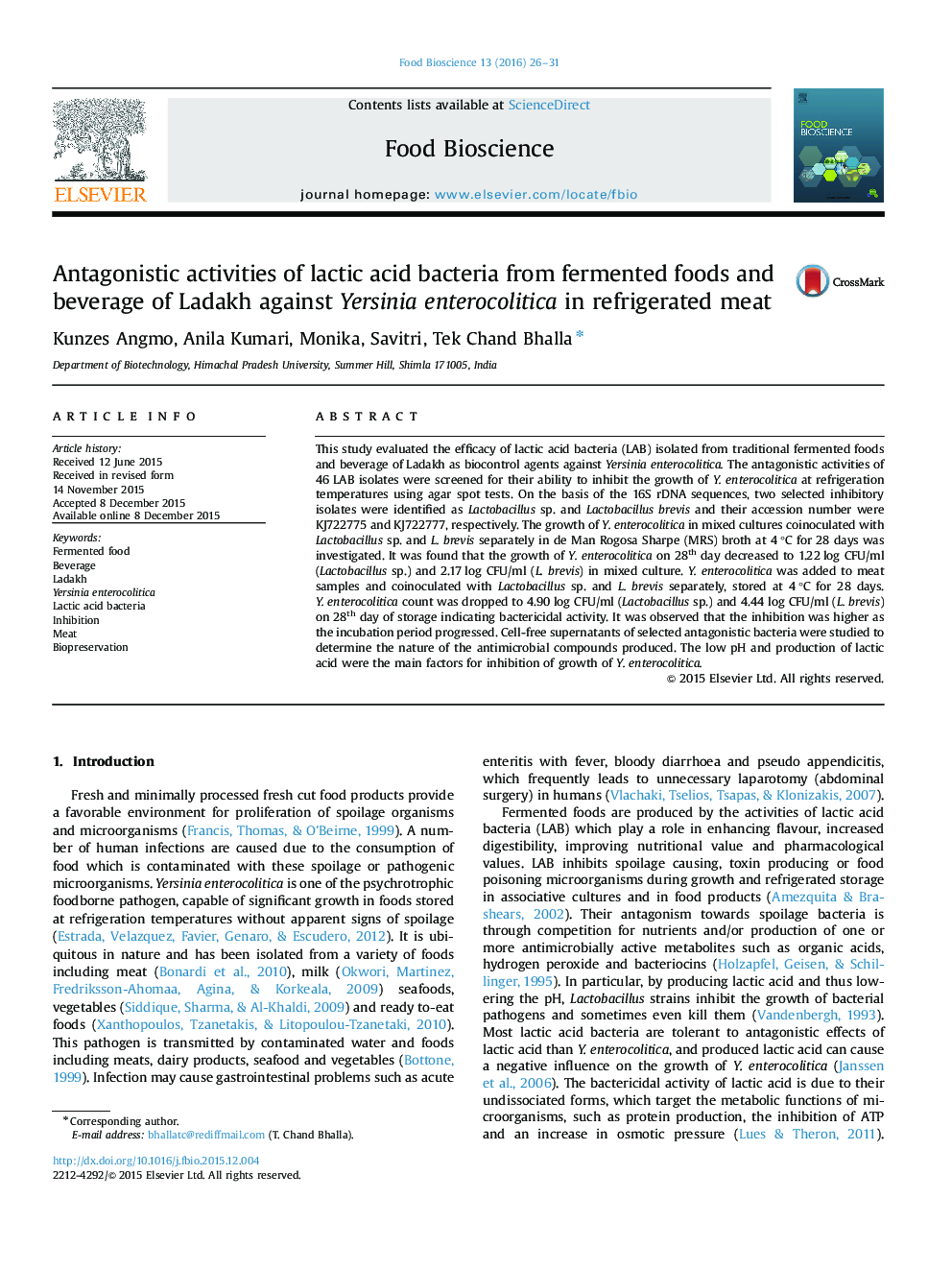| Article ID | Journal | Published Year | Pages | File Type |
|---|---|---|---|---|
| 19663 | Food Bioscience | 2016 | 6 Pages |
•Potential of Lactobacillus brevis and Lactobacillus sp. as biopreservative in refrigerated meat has been reported.•Decrease in the count of Yersiniaenterocolitica during storage has been observed.•Low pH and lactic acid were found to be the major inhibition factors for Y. enterocolitica.
This study evaluated the efficacy of lactic acid bacteria (LAB) isolated from traditional fermented foods and beverage of Ladakh as biocontrol agents against Yersinia enterocolitica. The antagonistic activities of 46 LAB isolates were screened for their ability to inhibit the growth of Y. enterocolitica at refrigeration temperatures using agar spot tests. On the basis of the 16S rDNA sequences, two selected inhibitory isolates were identified as Lactobacillus sp. and Lactobacillus brevis and their accession number were KJ722775 and KJ722777, respectively. The growth of Y. enterocolitica in mixed cultures coinoculated with Lactobacillus sp. and L. brevis separately in de Man Rogosa Sharpe (MRS) broth at 4 °C for 28 days was investigated. It was found that the growth of Y. enterocolitica on 28th day decreased to 1.22 log CFU/ml (Lactobacillus sp.) and 2.17 log CFU/ml (L. brevis) in mixed culture. Y. enterocolitica was added to meat samples and coinoculated with Lactobacillus sp. and L. brevis separately, stored at 4 °C for 28 days. Y. enterocolitica count was dropped to 4.90 log CFU/ml (Lactobacillus sp.) and 4.44 log CFU/ml (L. brevis) on 28th day of storage indicating bactericidal activity. It was observed that the inhibition was higher as the incubation period progressed. Cell-free supernatants of selected antagonistic bacteria were studied to determine the nature of the antimicrobial compounds produced. The low pH and production of lactic acid were the main factors for inhibition of growth of Y. enterocolitica.
